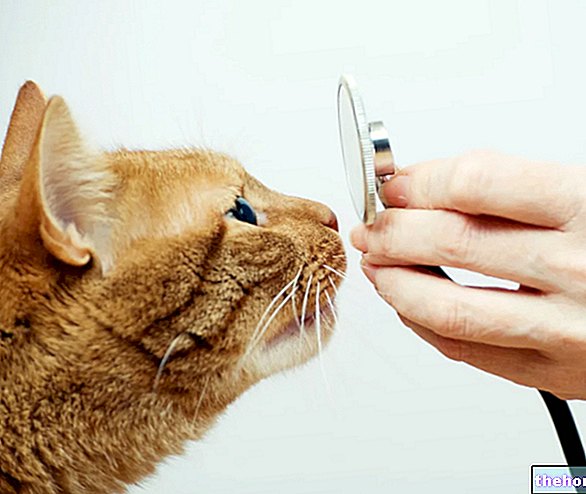The heartworm is caused by a parasite called Dirofilaria immitis, which completes part of its life cycle first in an intermediate host (mosquitoes), which also acts as a biological vector, and then in a definitive host (an animal such as a dog or cat).
In the absence of timely treatment, the heartworm causes difficulty in breathing up to the death of the infested animal.
For further information: Heartworm in Dogs: Risk Factors and Symptoms , but rather a treatment on the infested host (the dog) against the L3 and L4 larval forms of heartworm, to prevent these from becoming adults and causing the disease.The transmission of the parasite is possible in the months of the year characterized by the presence of mosquitoes. If until a few years ago these insects appeared in April and disappeared in November, today, due to the average rise in temperatures, things have changed slightly , especially in some geographical areas: the first mosquitoes can be seen already in early March, while the last ones are still present in December.
Consequently, if once the prevention treatment of heartworm in dogs went from April to November, today it makes more sense to extend it, including the months of March and December (even some veterinarians recommend an annual preventive therapy).
Preventive treatment of heartworm in dogs can begin as early as 6-8 weeks of age.
Preventive Therapy of Heartworm in Dogs: Drugs
In Italy, there are several medicinal products that act on the larval stages (L3-L4) of the parasite, causing its death.
Being substances that act on the larval stages of the heartworm prior to L5, they are effective up to the 50th -55th day from the onset of the infestation (penetration of the heartworm into the final host).
The drugs currently available are:
- Milbemycin oxime (eg: INTERCEPTOR® FLAVOR; MILBEMAX® DOGS): is administered every 30 days orally, starting within 1 month of the appearance of mosquitoes and ending with the last tablet within 30 days of their disappearance;
- Selamectin (ex: STRONGHOLD): applied monthly, in solution spot-on, on the skin at the base of the neck, with the first application within one month of the appearance of mosquitoes and the last within 1 month of their disappearance;
- Moxidectin, which can be found:
- In solution spot-on (eg ADVOCATE®), to be applied at least one month before the expected appearance of mosquitoes, then monthly up to 30 days after the disappearance of the insects;
- In the form of oral tablets (eg: GUARDIAN®), which begin to be given within one month of the appearance of the intermediate hosts (mosquitoes), and continue, on a monthly basis, until the month following their disappearance;
- In injectable solution (GUARDIAN®SR), which, once injected subcutaneously, within 30 days of the appearance of mosquitoes, has an "efficacy that lasts for the entire season of risk of Filaria;
- Ivermectin (CARDOTEK-30®; CARDOTEK-30®PLUS): in the form of chewable tablets, it is started to be administered, every 30 days, within one month of the first exposure to mosquitoes, to finish with the last dose within one month of " last exposure.
Very simple and not at all invasive or painful for the dog, this diagnostic test can be performed at the vet for a few tens of euros.
If the outcome of the aforementioned test is positive (therefore in the presence of a diagnosis of heartworm disease), the veterinarian will assess the dog's health and, if the conditions exist, will plan the so-called adulticide therapy, a treatment, pharmacological and / or surgical depending on the case, which allows to kill the adult parasites settled in the heart and pulmonary arteries.
Remember that the earliness with which heartworm is diagnosed in the animal is extremely important. From the symptomatic class to which the sick dog belongs (see in this regard what is reported here) will depend on the setting of an adequate therapy and, above all, prognosis (recovery forecast).
For example, for a dog belonging to class 1 (less severe), recovery is a "more than concrete hypothesis; for a class 4 dog (more serious), however, despite the use of surgery, the hopes of recovery and survival. to the heartworm are really small.
;



























